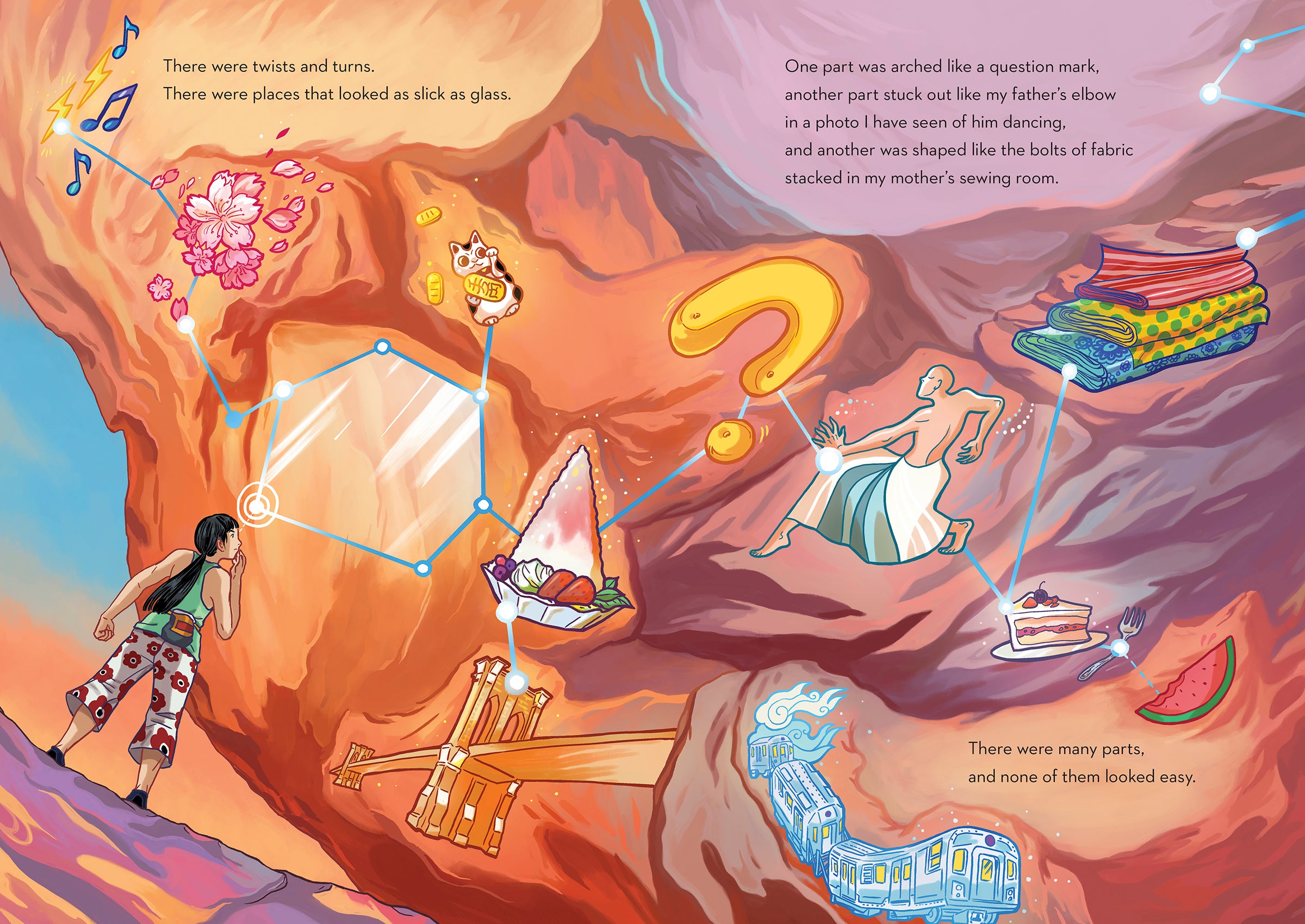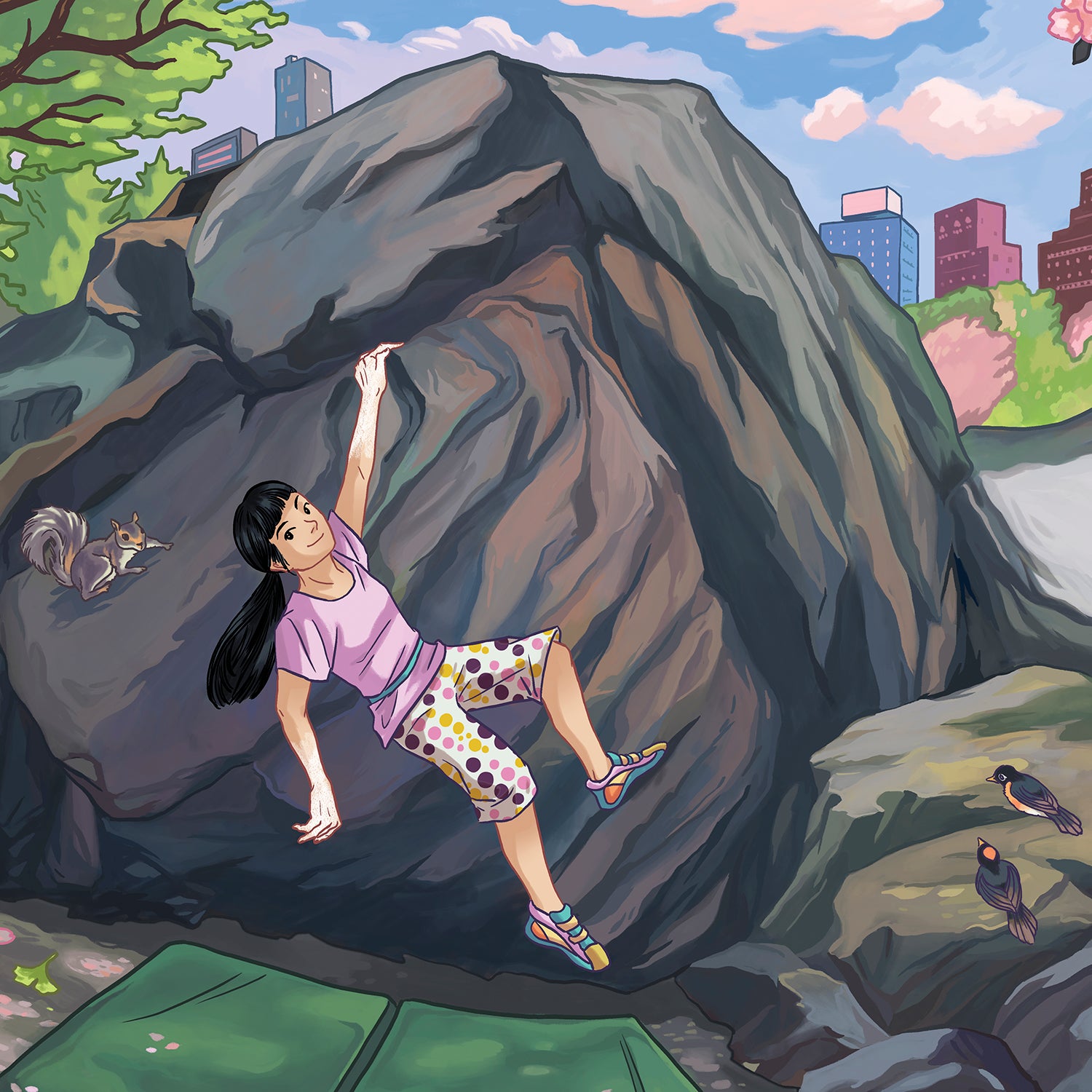“I am Ashima. What I do is climb. What I do is solve problems, which is to say, I make them mine.”
So begins a new children’s book by Ashima Shiraishi, with what has to be one of the most understated openers of all time. Shiraishi doesn’t just climb. She’s one of the best climbers in the world, a bouldering phenom who made headlines in her early teen years for becoming the first female to send routes that thwarted all but the most elite professionals. Now, with the publication of , released this spring by Penguin Random House, she’s also an author. And she’s still only 19 years old.
The book, crafted for kids between four and eight years old, centers on Shiraishi’s efforts to figure out a very big problem: Golden Shadow, a route in South Africa rated V14 on the bouldering difficulty scale, or nearly as hard as it gets (ratings range from V0 to V16). After falling countless times, she topped out when she was 13 years old, becoming only the second female to ascend a V14. In one of the book’s many vibrant illustrations by (whose previous work includes an album cover for Katy Perry), Shiraishi stands atop the boulder, framed by an orange sunset, both fists raised in triumph.
“It was the hardest problem I’d ever tried,” she told me in a recent phone interview. “I didn’t think I could do it. Believing in yourself is a huge part of climbing, and there were a lot of times when I lost that.”
This kind of humility runs throughout the book. How to Solve a Problem isn’t an ode to Shiraishi’s remarkable athleticism—it’s a chronicle of how she has learned to see problems as possibilities rather than obstacles. By depicting how she breaks a seemingly insurmountable challenge into manageable steps, Shiraishi’s story encourages kids to be tenacious and thoughtful in solving their own problems, whether they’re climbing or in other aspects of their lives.
Using outdoor sports to teach kids real-world skills isn’t new, of course. But it’s not often that this approach appears in children’s literature. Rarer still is a kids’ adventure book with a young, female, Japanese-American protagonist.

Giving children an alternative role model was one reason Shiraishi wanted to write a book. Another was to present a style of climbing that’s accessible to a more diverse audience. The vast majority of kids who get into climbing tend to be from well-off white families that can afford to participate in a sport requiring specialized equipment (shoes and a harness at the least) and either private coaching or a gym membership, unless they have climber parents who have time to take their children to the crag.
Shiraishi’s story is a little different. She grew up in New York City with immigrant parents and started bouldering at age six, after an older Japanese gardener and climber noticed her scrambling up a rock in Central Park and offered to teach her. Because she was so young, local climbing gyms let her train for free, which was key, because her family couldn’t afford a membership.
Though she’s now a sponsored athlete who travels the globe, Shiraishi has stuck with bouldering precisely becasue it's a simpler and more affordable discipline. There are no multi-pitch rock faces or big racks of climbing gear. Bouldering is more about the means than the end; it’s about using your body as an instrument to unlock a puzzle rather than executing a complicated expedition.
As she studies Golden Shadow, Shiraishi visualizes the boulder as a map, with one part that “arche[s] like a question mark” and another that sticks out “like my father’s elbow in a photo I have seen of him dancing.” (Before he became her full-time coach, Shiraishi’s father, Poppo, was a professional dancer.) Working her way through the map, she dangles from a barely visible fingerhold and hugs her body to the rock. Then she falls, the ground rushing up beneath her. As she recovers, munching a peanut butter and jelly sandwich, she reconsiders the problem, “with all the information the fall had given me.
“Each fall is a message, a hint, an idea,” she adds. “A new way to move from over there to over here.”
Shiraishi’s hope is that How to Solve a Problem will inspire kids from all backgrounds to move from where they are to where they want to be. Maybe, she thinks, some kid somewhere will pick up her book and start to dream about climbing. Or writing. Or traveling. And in the end, that’s what Shiraishi’s approach is all about: figuring out how to pursue your passions despite the many barriers the world puts in your way.
At the same time, she recognizes that those barriers are sometimes tangible, which is why she’s to create a signature climbing shoe and donate the proceeds to organizations that teach kids from lower-income communities to climb. Between that project, the book, and her own continuing rise to stardom, she’s reshaping the sport of climbing, starting where she herself had such an outsize impact—childhood. As she explained in our phone call, “I want to create positive, long-lasting changes in the outdoor industry.”


